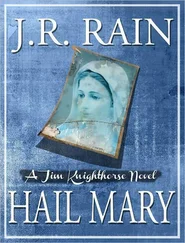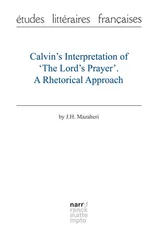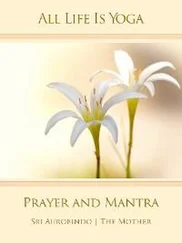Helge Fauskanger - J.R.R. Tolkien’s Lord’s prayer and Hail Mary in Quenya - Syntactical and Etymological Analysis
Здесь есть возможность читать онлайн «Helge Fauskanger - J.R.R. Tolkien’s Lord’s prayer and Hail Mary in Quenya - Syntactical and Etymological Analysis» весь текст электронной книги совершенно бесплатно (целиком полную версию без сокращений). В некоторых случаях можно слушать аудио, скачать через торрент в формате fb2 и присутствует краткое содержание. Жанр: Языкознание, на английском языке. Описание произведения, (предисловие) а так же отзывы посетителей доступны на портале библиотеки ЛибКат.
- Название:J.R.R. Tolkien’s Lord’s prayer and Hail Mary in Quenya: Syntactical and Etymological Analysis
- Автор:
- Жанр:
- Год:неизвестен
- ISBN:нет данных
- Рейтинг книги:5 / 5. Голосов: 1
-
Избранное:Добавить в избранное
- Отзывы:
-
Ваша оценка:
- 100
- 1
- 2
- 3
- 4
- 5
J.R.R. Tolkien’s Lord’s prayer and Hail Mary in Quenya: Syntactical and Etymological Analysis: краткое содержание, описание и аннотация
Предлагаем к чтению аннотацию, описание, краткое содержание или предисловие (зависит от того, что написал сам автор книги «J.R.R. Tolkien’s Lord’s prayer and Hail Mary in Quenya: Syntactical and Etymological Analysis»). Если вы не нашли необходимую информацию о книге — напишите в комментариях, мы постараемся отыскать её.
J.R.R. Tolkien’s Lord’s prayer and Hail Mary in Quenya: Syntactical and Etymological Analysis — читать онлайн бесплатно полную книгу (весь текст) целиком
Ниже представлен текст книги, разбитый по страницам. Система сохранения места последней прочитанной страницы, позволяет с удобством читать онлайн бесплатно книгу «J.R.R. Tolkien’s Lord’s prayer and Hail Mary in Quenya: Syntactical and Etymological Analysis», без необходимости каждый раз заново искать на чём Вы остановились. Поставьте закладку, и сможете в любой момент перейти на страницу, на которой закончили чтение.
Интервал:
Закладка:
At the end will be found a Summary recapitulating the major new insights provided by this text. Here I will slip into a perspective that is "practical" rather than strictly academic: I tend to be mindful about the needs of people who want to write or compose in Quenya themselves, since many aspire to do this, usually being very anxious to stay within the framework of Tolkien’s system and not distort or dilute it.
The discussions below will involve extensive comparison with earlier published sources. These will normally be referred to by book (denoted by the common abbreviations) and page. However, in the case of two sources, I shall simply refer to them by name with no further references. They are:
Namárië : Also known as Galadriel’s Lament, this is by far the longest Quenya text in LotR, occurring in The Fellowship of the Ring , Book Two, near the end of chapter VIII ("Farewell to Lórien"), beginning: Ai! laurië lantar lassi súrinen…
The Cormallen Praise: The praise received by the Ringbearers on the Field of Cormallen in The Return of the King , Book Six, chapter IV ("The Field of Cormallen"). The parts we shall here refer to are these: Daur a Berhael, Conin en Annûn!… A laita te, laita te! Andave laituvalmet!… Cormacolindor, a laita tárienna!(Cf. SD:47.) The first exclamation is in Sindarin, the two others are Quenya. Letters:308 provides these translations: "Frodo and Sam, princes of the west, glorify (them)." – "Bless them, bless them, long we will praise them." – "The Ring bearers, bless (or praise) them to the height."
NOTE: In the following discussions, the asterisk * is prefixed only in the case of genuinely unattested forms or sentences (wrong forms are marked with a double asterisk). "Primitive" or ancestral forms quoted by Tolkien himself, that he often asterisked, must actually be counted just as authoritative as the "attested" forms. These fictional "reconstructions" are not here asterisked, but are simply referred to as "primitive" or "ancestral". A distinction is here made between "unattested" or "reconstructed" forms and sentences, which are marked with *, and "deconstructed" words, that are marked with the symbol # instead. The latter is used in the case of word-forms that are not "constructed" but simply isolated from the attested form, e.g. # indóme will isolated from indómelya thy will . However, mere grammatical affixes isolated from the main word are usually not so marked, since they do not appear as independent words anyway; the symbol # is only used in the case of endings that cannot be isolated with full confidence.
Though I normally regularize the spelling of Tolkien’s languages, especially in my own compositions, I have here retained the spelling used in the sources for the sake of academic accuracy. Thus there is here some inconsistency regarding such variant spellings as kor c, qor quand the use of the diaeresis.
2. The Text
Tolkien wrote his text on a piece of stationery (hence the words "From Professor J.R.R. Tolkien, Merton College, Oxford" at the top). The text of the prayers is not written in quite modern letters, but in a medieval-style script, Tolkien apparently amusing himself by producing something with the look and feel of an "ancient manuscript". More specifically, he appears to have imitated a hand historically used for Anglo-Saxon. The most peculiar feature of this style of writing is the shape of the letters sand r, that look more like modern-day rand p, respectively (for instance, the words sí ar"now and" in the middle of the second-to-last line of the manuscript are written in a way that to a modern reader would rather suggest "rí ap"). Instead of regular commas Tolkien uses dots, and instead of full stops normally what looks like a modern colon; a regular full stop is however found following the word emmen.
I shall base my analysis on the following reading of Tolkien’s text:
Átaremma i ëa han ëa · na aire esselya · aranielya na tuluva · na care indómelya cemende tambe Erumande : ámen anta síra ilaurëa massamma · ar ámen apsene úcaremmar sív' emme apsenet tien i úcarer emmen. Álame tulya úsahtienna mal áme etelehta ulcullo : násie : Aia María quanta Eruanno i Héru as elye · aistana elye imíca nísi · ar aistana i yáve mónalyo Yésus : Aire María Eruo ontaril á hyame rámen úcarindor sí ar lúmesse ya firuvamme : násie :
In the manuscript, four words occurring at the end of a line are divided by a hyphen, the word continuing on the next line: massa-mma, ú-sahtienna, món-alyo, firu-vamme. It seems certain that the hyphens divide the words simply because of lack of space and should not otherwise be included. (In the case of firu-vamme, the hyphen is quite large and elaborate, but since it intrudes in the middle of a morpheme – the future-tense ending - uva– there can be no regular division here.)
The text above certainly is not the only possible reading. The distribution of spaces is vague; ëa hanand as elyecould be read as single words ( ëahan, aselye) [2] VT43 prefers the one-word reading aselye .
. A few of the accents (indicating long vowels) are unclear; if they are there at all, they are obscured by descending elements of the letters above. Imícamay also be read ímíca, both i's being long. When I read yávewith a long á, it is primarily because all other sources have a long áin this word and related words ( yáve fruit by itself in LR:399 s.v. yab and as the last entry in the Silmarillion Appendix; cf. also yáviëfor autumn , harvest in LotR, Appendix D). There just might be an accent above the ahere as well, merged into the letter above; however, without the help of other sources I would probably have read yave, and that may be the actual reading here [3] so in VT43
. Á hyamecould very well be read as one word, áhyame; I prefer reading áas a separate word because this imperative particle is not directly prefixed to the following verb in our very few other examples, such as á valarather than * ávalain WJ:404 [4] VT43 agrees with me in reading á hyame .
.
The manuscript itself provides definite clues to the dating. For one thing, since this is on Merton College stationery, it cannot be earlier than 1945 (when Tolkien moved from Pembroke to Merton). The spelling of the Quenya text is also interesting: we repeatedly have crather than k, and the word quanta"full" provides an example of qurather than q. Students of Tolkien’s languages will know that in the pre-LotR period, Tolkien usually wrote q, krather than qu, c(indeed the name of the language itself was spelt "Qenya"). Various philological clues, discussed in detail in the Lexical Commentary below, seem to suggest that this text is not younger than the LotR Appendices (in particular, see the entry for the word ilaurëaconcerning the element aurë). This takes us to 1955 or later, but not later than 1959-60 (when a certain phonological feature, found in the Etymologies of the thirties but apparently abandoned in the text before us, seems to have been re-instituted – see the entry carein the Lexical Commentary). The word # massa(rather than masta) for bread also points to the fifties; see the entry massamma. Instead of the word ontarilfor mother , begetter we might have expected * nostarilbased on a last-minute change Tolkien did in the final volume of LotR (SD:73); this may suggest that our text (slightly?) predates this minute change. If we date this text to 1955, we shall probably not err much. It may be a little earlier, but not much: the word ëaoccurring in this text does not seem to have entered Tolkien’s mythos before 1951 (see LR:338, MR:7, 31 regarding Ëaor Eäas a name of the universe). The word # ála"do not" incorporates - laas a negative element "not", but "possibly soon after the publication of The Lord of the Rings ", Tolkien abandoned this element (see VT42:32). He reintroduced it in the last years of his life, but this text is certainly older than ca. 1970. All things considered, it seems quite unlikely that Tolkien made these translations earlier than 1951 or later than 1955.
Читать дальшеИнтервал:
Закладка:
Похожие книги на «J.R.R. Tolkien’s Lord’s prayer and Hail Mary in Quenya: Syntactical and Etymological Analysis»
Представляем Вашему вниманию похожие книги на «J.R.R. Tolkien’s Lord’s prayer and Hail Mary in Quenya: Syntactical and Etymological Analysis» списком для выбора. Мы отобрали схожую по названию и смыслу литературу в надежде предоставить читателям больше вариантов отыскать новые, интересные, ещё непрочитанные произведения.
Обсуждение, отзывы о книге «J.R.R. Tolkien’s Lord’s prayer and Hail Mary in Quenya: Syntactical and Etymological Analysis» и просто собственные мнения читателей. Оставьте ваши комментарии, напишите, что Вы думаете о произведении, его смысле или главных героях. Укажите что конкретно понравилось, а что нет, и почему Вы так считаете.












